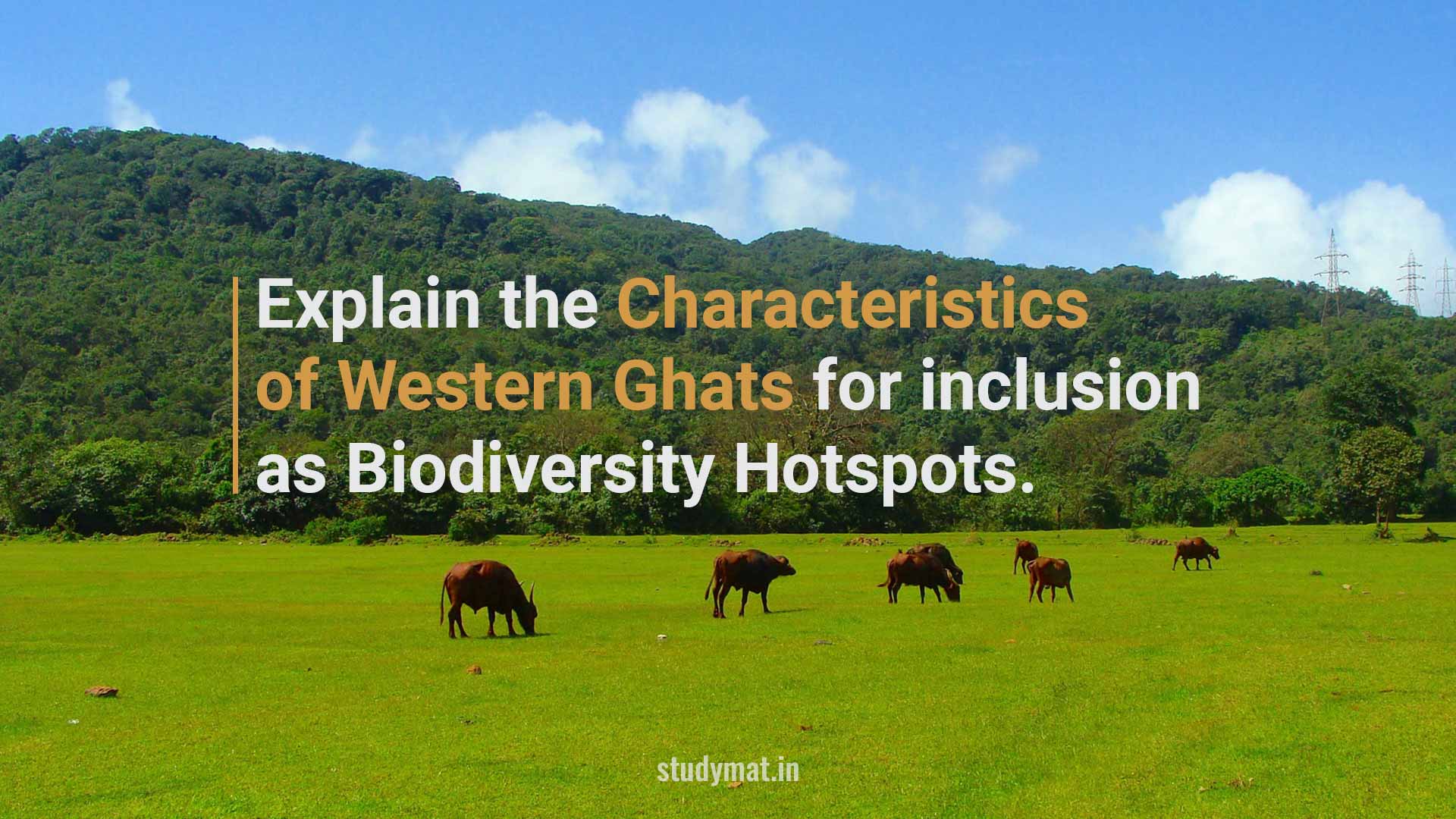In this article, we will Explain the Characteristics of Western Ghats for inclusion as Biodiversity Hotspots.
Characteristics of Western Ghats for inclusion as Biodiversity Hotspots.
The Western Ghats is a significant region in India known for its large tropical evergreen forests. It covers an area of about 160,000 square kilometres and is located between the coast and the Deccan peninsular zone. These forests make up around one-third of the total area of the Western Ghats. Unfortunately, in recent years, a considerable amount of forest cover has been lost, which is a cause for concern because this region is exceptionally rich in biodiversity.
The Western Ghats is home to a wide variety of plant and animal species that are found nowhere else in India. Approximately two-thirds of the plants that are unique to India can be found in this region. However, many of these species have not been fully explored or studied yet. The forests in this area are not only important for their biological diversity but also play a crucial role in maintaining the water cycle.
Read Also:
Explain an Indirect Use Value of Biodiversity.
“Species Diversity is the most visible component of Biodiversity.” Explain.
Some well-known species that are found exclusively in the Western Ghats include:
- Primates: Nilgiri Langur and Lion-tailed Macaque
- Rodents: Platacanthomys (the Spiny Dormouse)
- Squirrels: Several subspecies of Ratufa indica, each found in different parts of the Western Ghats
- Carnivores: Malabar Civet in the southern evergreen forests, Rusty-spotted Cat in the northern deciduous forests
- Ungulates: Nilgiri Tahr, which can be found from the Nilgiris to Agastyamalai Montane grassland
- Hornbills: Malabar Grey Hornbill
In addition to these unique species, other well-known animals in the Western Ghats include Tigers, Leopards, Dholes, Sloth Bears, Indian Elephants, and Gaurs.
FAQ:
- Why are the Western Ghats a biodiversity hotspot?
- Assess the significance of the western ghats in the conservation of India’s biodiversity.
Follow Us:
If you like this article, you can Follow us on Facebook.
Also, you can Join our Official Facebook Group for QnA Sessions and Discussions with the worldwide IGNOU community.

